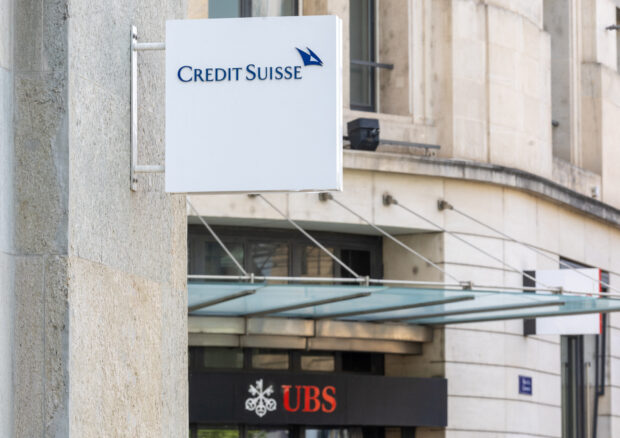UBS, Swiss government agree on Credit Suisse loss guarantee

ZURICH -UBS and the Swiss government signed on Friday an agreement to cover up to 9 billion Swiss francs ($10 billion) in losses from its emergency takeover of Credit Suisse, the country’s largest bank and the government said.
The deal comes with various conditions, including a requirement that UBS keeps its headquarters in Switzerland, the government said in a statement.
The loss protection agreement (LPA) will become effective with the completion of Credit Suisse takeover, expected as early as June 12, UBS said in a separate statement.
The guarantees will kick in if UBS incurs losses from the sale of Credit Suisse assets beyond 5 billion francs that the lender is due to cover itself.
The state money will also not come for free however, with UBS having to pay various set up and maintenance fees, as well as premiums on any money drawn.
The money was made available by the government to ease the emergency takeover of Credit Suisse, whose collapse risked triggering a global financial crisis.
“To make the takeover possible, the government granted UBS a guarantee for any losses incurred in the liquidation of Credit Suisse assets,” the government said in a statement.
“The guarantee will only come into effect if the losses from the liquidation of these assets exceed 5 billion Swiss francs and is limited to a total of 9 billion francs,” it added.
The agreement will cover a portfolio of Credit Suisse assets that were difficult to assess in the few days the banks had to hash out a deal and which are not needed as part of the future core business of UBS.
The government said the guarantee covered assets with a volume of around 44 billion Swiss francs, an equivalent of about 3 percent of the combined assets of the merged group, mainly made of derivatives, loans, legacy assets and structured products.
Valuations of the losses are expected to be made available during the third quarter of 2023, the government said, while their scale is “highly dependent on the actual wind-down of the assets concerned and market developments” it said.
“Consequently, it is not yet possible to estimate the probability of the guarantee being drawn and the amount involved,” the government said.
Have it, not use it
The government said its and UBS’s priority was to minimize potential losses and risks to avoid making use of the backstop “to the greatest extent possible.”
UBS said it would manage the assets in a “prudent and diligent manner and intends to minimize any losses and maximize value realization on these assets.”
The government said the agreement did not mention any federal participation in losses above the total agreed 14 billion francs because such a commitment would require “a legal basis as well a parliamentary approval of a corresponding guarantee credit.”
The agreement will remain in place until the final realization of the Credit Suisse assets.
Both the authorities and UBS are keen to assure the Swiss public that the takeover, orchestrated with the use of emergency laws and backed by public funds, will not become a burden for the taxpayers.
Concerns that the combined bank – with a balance sheet roughly double the size of the Swiss economy – would be too big for Switzerland, led the country’s Social Democrats to propose shrinking UBS assets.
There have also been calls for UBS to keep Credit Suisse’s Swiss operation as a separate entity, to ensure competition and preserve the legacy of the 167-year-old lender.
The loss protection agreement is among the final hurdles UBS needed to clear before it can officially finalize the biggest banking deal since the global financial crisis, possibly next week.
While the emergency takeover was hammered out over one weekend, talks about the exact scope and details of that loss protection had continued for several weeks.
READ:
UBS in talks with Swiss authorities over Credit Suisse deal protections
UBS flags $17B hit from Credit Suisse takeover